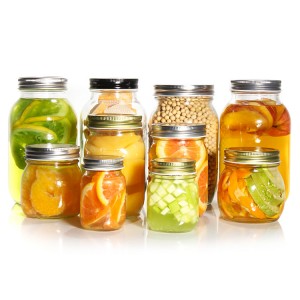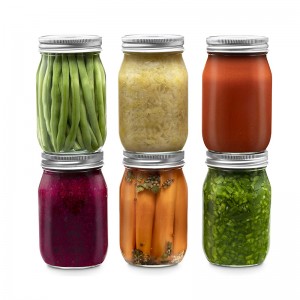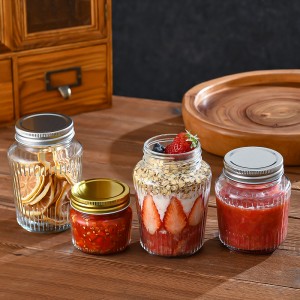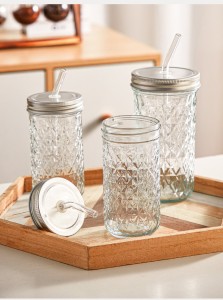The history of the Mason jar dates back to 1858 when New Jersey native John Landis Mason invented it. The idea of “heat canning” was introduced in 1806 by French chef Nicholas Appel to preserve food for long periods of time during the Napoleonic Wars. However, the products of this technique often suffered from imperfect sealing due to the use of champagne bottles secured with cheese and lime. Appel soon replaced the champagne bottles with glasses with wider necks, and by 1803 his canning products were successfully distributed to the French Navy. Mason’s design featuring a ribbed neck and a screw-on lid that formed an airtight seal helped perfect the canning process. The transparency of the glass used by Mason also allowed for the contents to be visible.
In the early 1900s, mass production made Mason jars ubiquitous in the United States. Canning and glass jars became an integral part of the agricultural culture, with jams and pickles judged and rewarded at fairs and festivals, especially in areas with short growing seasons. Color and beauty were often scored, with sparkling rubies attesting to the quality of the fruit and the intricacy of the labor involved in turning it into jam. Jams, pickles, and sauces were also exchanged as gifts, and remnants of this culture still exist in holiday pickle jars.
In the 1960s and 1970s, people seeking a more natural lifestyle filled their kitchens and cellars with items preserved in Mason jars. Today, many are more aware of the environmental and economic costs of transporting food, encouraging a return to locally grown produce and activities such as canning.
The Mason jar’s popularity is due in part to its versatility. It can be repurposed in many ways, including as soap dispensers, water glasses, candle jars, planters, vases, and food and beverage storage. A quick Google search for “Mason jar” yields many sites extolling its amazing utility.
Post time: May-26-2023








